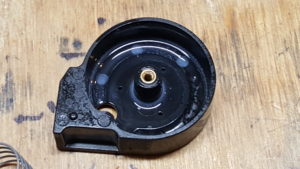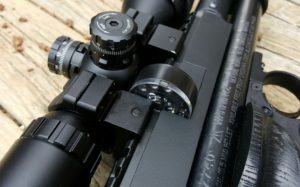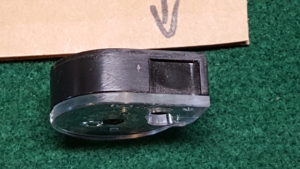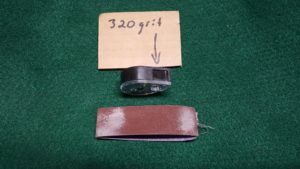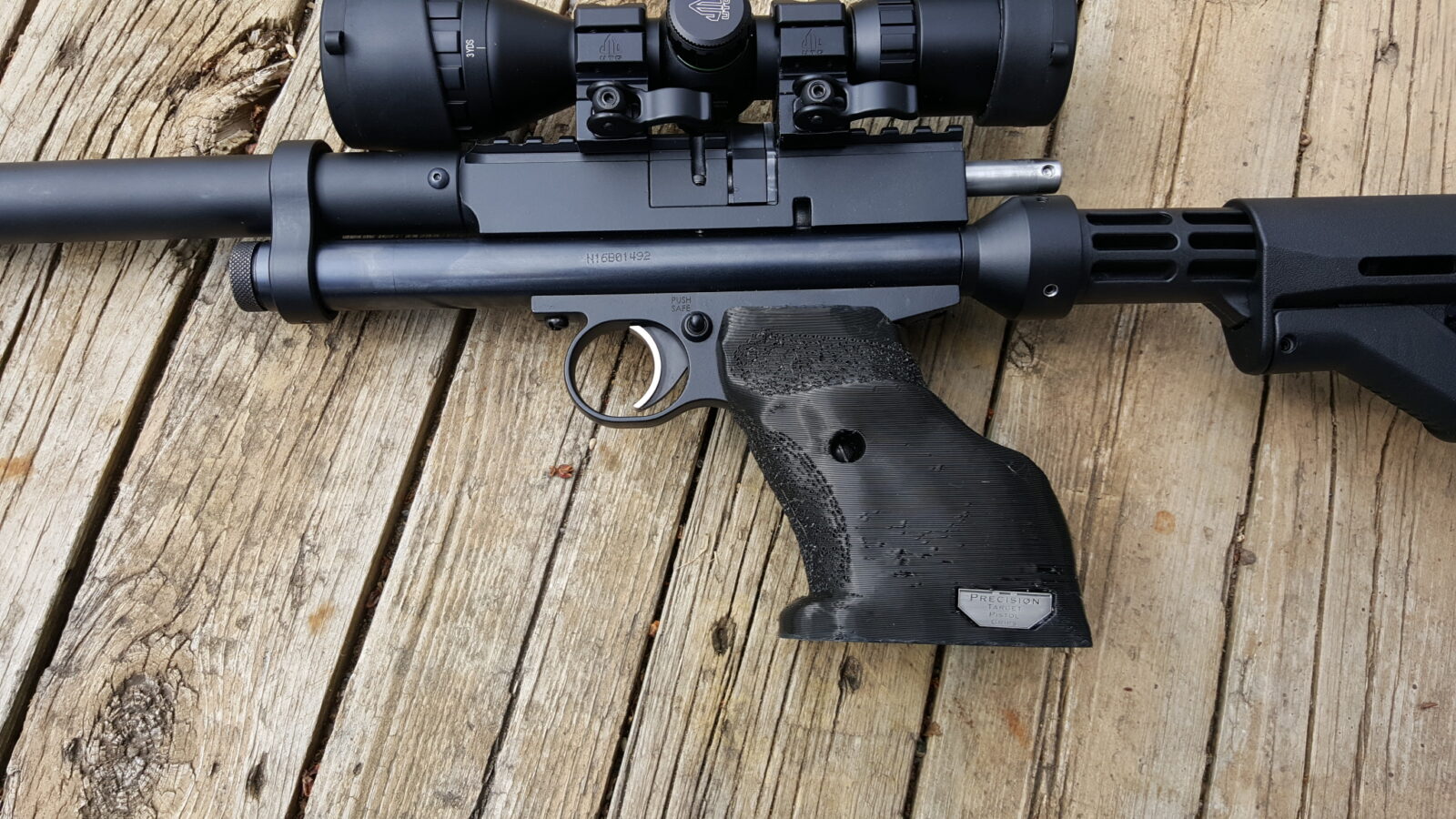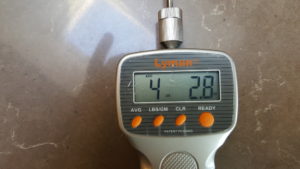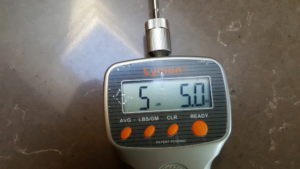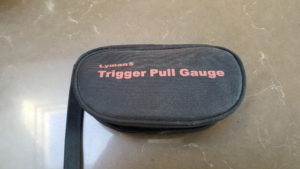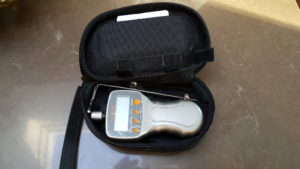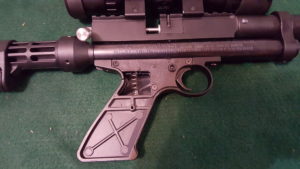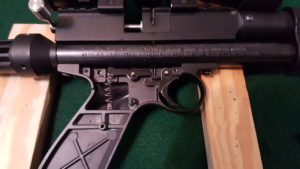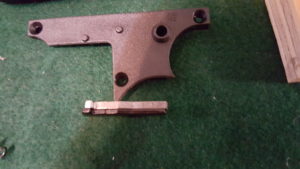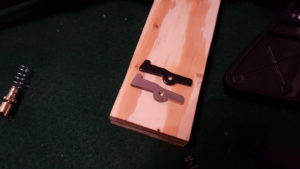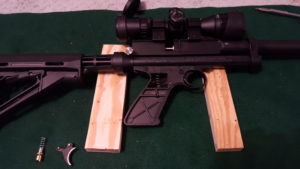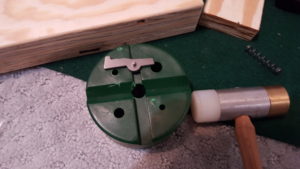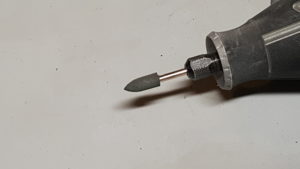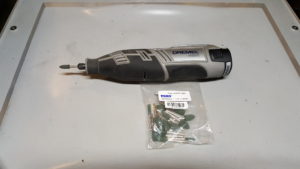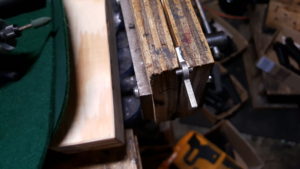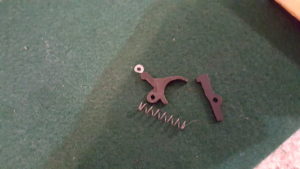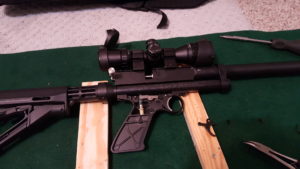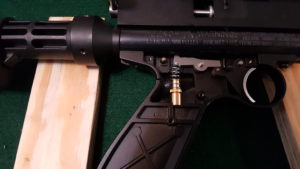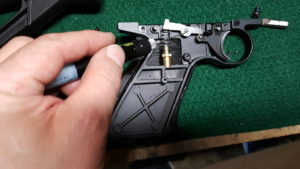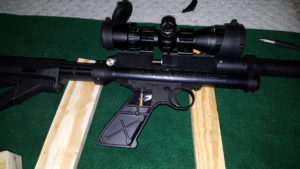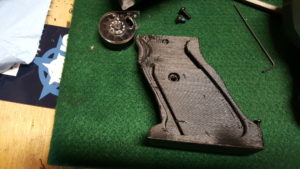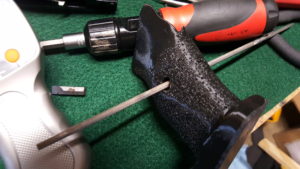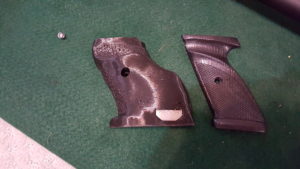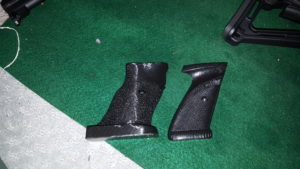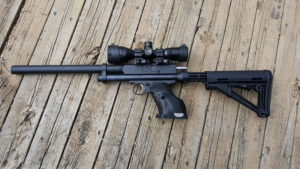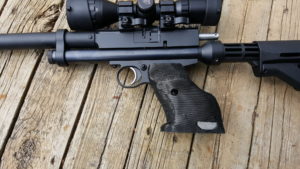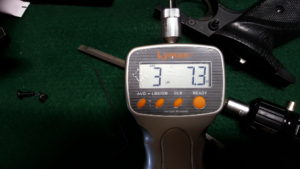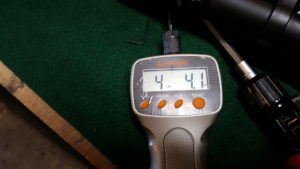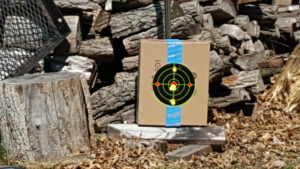Please note that there are three posts in this series. The method in the third post would fix just about any magazine while the other two helped some of the magazines:
- Sluggish Marauder Mag Fix: Try #1 – Loosen the Center Screw
- Sluggish Marauder Mag Fix: Try #2 – Dry Film Lubricants – Not a Good Fix – But Avoid 3-In-1 Dry Lube Because It Isn’t Dry!
- Sluggish Marauder Mag Fix: Try #3 – Change the Internal Spring Position – This is the best fix!
Now on to the post:
Ok, in the first couple of tries, I had some success loosening the center screw on a couple of the sluggish mags. Marginal improvement with dry lube but that didn’t fix two. What resurrected the two worst magazines was to disassemble the magazines and move the spring’s anchor leg to the center hole. What this did was to increase the tension of the spring and boy, did that fix the problem in spades. In the future, I would try loosening the center screw and if that didn’t work, I’d go right to this spring adjustment:
Here are the steps:
- Note where the spring is at currently my looking in the holes in the back of the magazine. If you see metal, that is the leg of the spring. All of my mags have had the spring’s leg in the same place from the factory thus far:
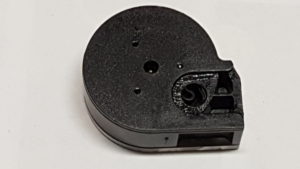
- Remove the center screw and disassemble the magazine with a 1/16″ hex key. Pay attention to how it fits together and also look for any debris or burs that might be causing drag:

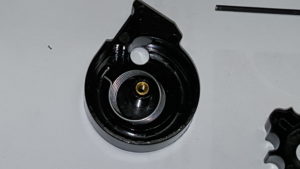
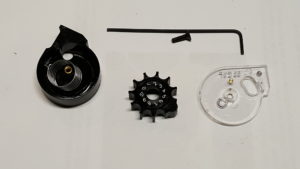
In this next photo, look at the spring. The downward leg is the bottom and the sideways leg is the top and the center of the drum has a slot that the top part of that spring nestles into: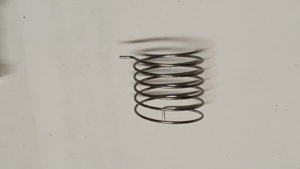
- Move the drum’s spring to the center hole in the track where the pellets are carried. .
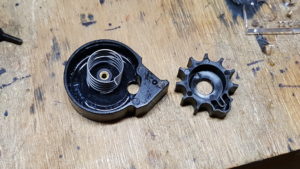
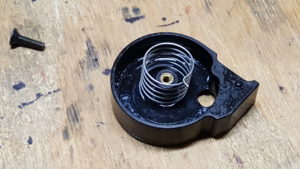 See the oily crap … I mean “film” in the mag? That is courtesy of the 3-in-1 supposed dry lubricant that I will never use again and got cleaned out right after I took this photo:
See the oily crap … I mean “film” in the mag? That is courtesy of the 3-in-1 supposed dry lubricant that I will never use again and got cleaned out right after I took this photo: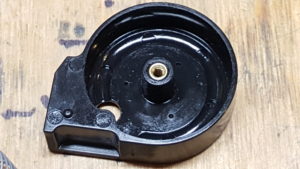 If you aren’t sure what hole I mean, look at this next photo. Magazines PA2 and PA4 have the spring located to the new hole half way around the magazine track. PA1 and PA3 still have the springs in the original hole and seem to work ok. This is also a good example of how labeling your mags helps you keep track of what is going on. PA1 was the worst by far.
If you aren’t sure what hole I mean, look at this next photo. Magazines PA2 and PA4 have the spring located to the new hole half way around the magazine track. PA1 and PA3 still have the springs in the original hole and seem to work ok. This is also a good example of how labeling your mags helps you keep track of what is going on. PA1 was the worst by far.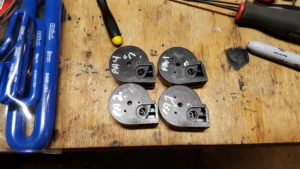
- Align the drum with the top of the spring and then carefully rotate the assembly clockwise slightly angling the long part of the drum so it will clear the part of the magazine that forms the start/end of the magazine area that holds the actual pellets.
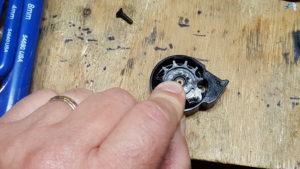
- Install the top so the brass pin that is embedded in the clear magazine cover rides in the groove of the drum. I slide the cover on upwards from the bottom while keeping the center secure otherwise it will fly out.
- Re-install the screw. Tighten it down until the cover can’t lift up and adjust the screw in/out until you feel the right amount of tension on the cover and it can move.
- Test by turning the top – you should feel way more spring tension now.
So in my testing, this worked great. If just loosening the cover a bit works for you, then great. If not, take it apart and move the spring. Note – I did try spraying the good Dupont Teflon dry lube in one of the magazines and I can’t say that there is a noticeable difference. You can if you want to experiment, but I’m not going to bother going forward.
I hope this helps you out!
idth=”0″ marginheight=”0″ scrolling=”no” frameborder=”0″ src=”//ws-na.amazon-adsystem.com/widgets/q?ServiceVersion=20070822&OneJS=1&Operation=GetAdHtml&MarketPlace=US&source=ac&ref=qf_sp_asin_til&ad_type=product_link&tracking_id=ronin03-20&marketplace=amazon®ion=US&placement=B007RHD6ZA&asins=B007RHD6ZA&linkId=7d2a6ce8c4b935dbebd35e4bd36c5f1f&show_border=false&link_opens_in_new_window=false&price_color=333333&title_color=0066c0&bg_color=ffffff”]
If you find this post useful, please share the link on Facebook, with your friends, etc. Your support is much appreciated and if you have any feedback, please email me at in**@*********ps.com. Please note that for links to other websites, we are only paid if there is an affiliate program such as Avantlink, Impact, Amazon and eBay and only if you purchase something. If you’d like to directly contribute towards our continued reporting, please visit our funding page.

